- 4,803

- Dearborn, MI
- MotorCtyHamilton
PDF Version of this tuning guide...
I felt that it was time to update my tuning guide after the 1.09 and beyond physics changes. For the most part, all of the tuning levers seem to work directionally the same as before, but different drive trains have received some adjustments to their starting points.
Building A Tune From Scratch
I am just going to lay my approach out here. This is how I work through a tune. I do things typically in this order.
Oil Change– Are you tuning a short term car or a long term car? For a short term car, donotperform an oil change. It robs power at the same PP level. Take any car and note the stock PP and HP levels (example: Scirocco R ‘10 at 438PP/252HP). Next perform an oil change and note the new PP/HP levels (Scirocco @ 445PP/265HP). Finally, use the power limiter to re-establish the car’s original PP level (Scirocco needs 94.5 power limiter to equal 438PP). The new HP rating for the Scirocco is now 250, a 2hp drop from stock (or 0.8% lower horsepower). I have tested this on many cars in GT6 and the average drop is a 1% horsepower loss. If you are using a car for a short period of time, do not perform oil changes. There are more efficient ways to gain power for a PP build. If I were entered into a weekly racing series I might consider purchasing a brand new car for each event and enter without an oil change.
Adding parts– I don’t build very many maxed out tunes. Most of the racing that I do has a set PP level and tire selection so this is how I decide what to add.
Weight
I start with considering the car’s weight. I try to get into a weight range and then move to power. Weight is always thought about first. When I can get a car into the weight ranges listed below, my lap times are always faster than going only with power. This is what I look for:
- Heavy cars need weight reduction to get them between 1400 and 1450kg
- I prefer average cars that are between 1200 and 1250kg
- Lighter cars in stock form do not always need weight reductions, but 1000kg seems to be the magic number
Power
There are some significant changes to the PP and HP gains in GT6 that are making parts selection much more complicated. In GT5 there were some clear winners (low PP gain vs. high HP gain). In GT5 on almost every car, the first power part that I would add is the racing exhaust. Next were exhaust manifold, intake manifold, air filters and ECU, all being really equal on PP/HP efficiency. The least efficient items in GT5 were the catalytic converter, turbo and supercharger. On almost every car that I tested in GT5, this order was really consistent. Not so in GT6. For comparison, I built ten different cars from FF Ford Focus ST to FR BRZ S’12 to MR NSX R to Honda S2000 to Ford GT to Ferrari FXX to Mustang Boss 302, etc. and every single one had a different list of parts that were most efficient PP/HP. In GT6, racing exhaust no longer won hands down and catalytic converter moves from the junk pile to the most efficient part on most cars.
So how do I choose? Below are two examples of popular cars in the GT series. I have listed all of the weight and power parts and their effect on PP and weight/HP. Note that these are done without oil change for the reasons mentioned earlier in this tuning guide. Most of the columns are self-explanatory. The one that may be confusing is “Gain/PP.” For weight reduction parts I have listed weight loss divided by pp gain. All three stages of weight reduction seem to have the same efficiency value per car (18kg per 1pp for the M3). When you scroll down to the power parts under “Gain/PP,” it gets much more interesting. This formula is horsepower gained divided by PP gained. A higher number is more desirable, more efficient. In the column next to the power part gain/pp I have listed a rank based on this efficiency. Below are results for the M3 Coupe '07 @ 525PP and Ford GT ’06 @600PP.

Choosing Parts and Why - M3 Coupe '07 @ 525PP
1. Window weight reduction and carbon hood. It only cost 1PP for both. I will be adding this to every car I tune in GT6 from here forward.
2. Weight reduction stage 3. This car is just too heavy. Stage 3 takes it down to 1340kg and combined with window and carbon hood the car will now be all the way down to 1325. I will probably add ballast and run this car at 1400kg. Ballast will allow me to play with the front/rear balance during tuning.
3. Sports Catalytic Converter. The winning power part, hands down with 3.25 hp per 1 pp.
4. Engine Tuning Stage 3.
5. Semi-Racing Exhaust.
6. Power Limiter 98.2%.
Build is now at 525PP and 491HP.

Choosing Parts and Why – Ford GT ’06 @ 600PP
1. Window weight reduction and carbon hood. It only cost 1PP for both. I will be adding this to every car I tune in GT6 from here forward.
2. Weight reduction stage 3. This car likes around 1200kg. Stage 3 takes it down to 1204kg and combined with window and carbon hood the car will now be all the way down to 1189. I will add ballast instead of using the power limiter. I want to run this car somewhere between 1200 and 1250kg. Ballast will allow me to play with the front/rear balance during tuning.
3. Sports Catalytic Converter. The winning power part, hands down with 4.25 hp per 1pp.
4. Racing Exhaust at 4.0 hp per 1 pp.
5. Isometric Exhaust Manifold at 4.0 hp per 1 pp.
6. Ballast at 24kg.
Build is now at 600pp and 628hp.
Other parts
If you are PP racing, I would always add the Triple-Plate Clutch, Carbon Drive Shaft and Racing Brakes, if available. If I am on a budget and do not plan to use a car long-term, I skip all three of these parts. They provide minimal gains so they are not really worth the money for a sometimes car, but why not take advantage of every little bit if you are racing online or in a time trial.
Chassis stiffness – I am not a fan of this. It adds understeer just as it did in GT5. I would use it as a last resort on very difficult MR or RR cars. The Yellow Bird comes to mind. So does the Enzo.
Wings on street cars– I do not add wings to my street car builds. It adds more rear grip and on most cars in the GT series I am trying to do the opposite, gain front grip. In GT5 it also cost PP to add wings so that just robs from the ability to drop weight and add power. Currently in GT6, downforce does not add to PP. Only add if you need more rear grip.
Wings on tuner cars– There are many tuner cars that reveal their front grip adjustments when you add a rear wing. I do add the rear wing if it allows for me to adjust the front downforce all the way up and the rear all the way down.
Downforce on race cars– Since adding downforce does not currently add to PP, use as much as you can on race cars for circuit tuning. I will often reduce rear downforce to improve cornering. Also, if I am racing on a circuit with an extremely long straight, I will lower front and rear downforce to around the half-way point. There does seem to be a top speed penalty for max downforce, but it is worth so much in the corners on most circuits.
Downforce on NASCAR -At Daytona I use min/min front/rear for the straight line speed gain. At Indy or Motegi, I use much more downforce.
Flat Floors– I avoid using flat floors. There is currently a PP expense to flat floors and the extra downforce does not seem to get paid back in exchange for the reduced power and/or weight.
Transmission– You must add all power parts before setting the transmission. I use the flip trick. I like to set it and forget it. Others like Praiano use a similar method but will match the shift points to the engine’s RPM. A customized transmission is worth more than adding most power upgrades and it doesn’t cost any PP points. The transmission is a must on a car that I plan to use long term. If I am detuning for the A-spec races I will sometimes run the stock gearbox. Also, I like numbers that end in zero or five simply because they look cleaner and they are easier to type into tuning sheets.
Transmission Flip
1.) Final Gear to maximum (all the way right)
2.) Max Speed to minimum (all the way left)
3.) Highest Gear to maximum (all the way right – probably rounded)
4.) 2nd Gear to about 80% left (example: for a range of 1.915 to 2.427 I pick 2.000)
5.) For gears 3rd through highest, make relatively even spacing between gears. I tend to leave a little more space between 2nd, 3rd and 4th than I do between 4th, 5th and 6th. If you look closely at my settings you will see that the gear lines get slightly closer as you move from left to right (1st to 6th).
6.) Set top speed through Final Gear, not Max Speed. Do not touch the Max Speed adjustment at any time past step two. Use the Final Gear setting to achieve just before redline on the longest straight.
7.) Set first gear. If for rolling starts I tend to move this slider to the right and match my even spacing. For standing start racing you will need to test out a few. I have been burned a few times in online racing for having these settings too far left. For standing starts, 1st gear may need to be much further to the right. When you have the launch you are looking for, you will then need to go back and even out all of the gears again.
8.) Further optimize the gearbox for a specific track. You may find that a 2nd, 3rd or 4th gear shift is in a bad spot, mid-corner or right before a braking zone. Re-adjust these gears to optimize for the specific track. For example, if the car wants a 2nd to 3rd gear change just before the exit of a key corner, move the 2nd gear slider to the left and re-adjust the spacing of the other gears. Or, for example, if you are nearing a shorter straight section and find the need to shift from 4th to 5th right before a braking zone, move the 4th gear slider to the left then re-adjust the spacing of the other gears.
Limited Slip Differential –The limited slip differential is the very first handling bit that should be tuned. The LSD remains what I call a “super tune” just as it was in GT5. If you only have the time, patience or limited understanding of this tuning guide, learn this section. Combine this knowledge with any suspension tuning method and you will be faster in GT6.
LSD Accel: This setting has one purpose, to manage inside and outside wheel spin. If the inside wheel spins first, raise this setting. If the outside wheel spins first, lower this setting. Most often the tire in need of help will turn red upon throttle application from the corner apex. Sometimes, a car will get loose on you, but neither tire turns red. In this case, put two or three levels harder tires on the car and mash the throttle in the slow, 2nd gear corners and you should be able to find which tire turns red first. Keep adjusting until both drive tires spin at the same time and this setting will be optimized. On a few cars, you will find a situation where one click higher will make the outside tire turn just a little red and one click lower will make the inside tire a little red. On these rare cars, you cannot fully optimize this setting and will need to choose one. In general, I am using settings between 8 and 20. I have seen very few cars needing higher than this.
LSD Decel: This setting has one purpose, to manage stability when off throttle (under braking, turn-in or when coasting). If your car is loose (oversteer) in these situations, raise this setting. If your car has understeer during these conditions, lower this setting. Nearly all of my FF car tunes have settings between 5 and 7. This setting is completely car dependent. If PD programed a car to be loose on entry, then this setting is very useful. I cannot find a pattern among cars. For example, I have tested twelve Miata in GT6 and they are ranging from 9 to 22 at the moment.
LSD Initial Torque: This setting determines how much power is needed to activate the diff, to make it lock. What this means is that a higher number produces more understeer and a lower number produces more oversteer. It is that simple. The LSD does not add or subtract acceleration. The LSD cannot send more or less power to the drive train. The LSD can only distribute the given amount of power to each of the drive wheels. I see many on this site confuse the LSD with slipper clutches. This must come from R/C off road racing where slipper clutches are popular. In R/C racing a sipper clutch is added as a bolt on to the drive train and will actually slip as power is applied and grip in the higher revs to keep the rear wheels from spinning. There is still a limited slip differential in those gear boxes and they are not set up to slip. They are set up to do the only job of the LSD, to distribute power from side to side under acceleration and braking. If you set them up to slip, they melt. Same goes for real world, if your LSD slips, it melts. Heat is the #1 enemy of the limited slip. This is why we have traction control in the real world and in GT6. Traction control limits power through the drive train to the wheels, not the LSD.
LSD tuning on 4wd– I will admit that tuning the LSD for 4wd cars is much more challenging than for other drive trains. It is more difficult to diagnose the problems, even when using hard tires. I have not landed upon a solid method for the 4wd. Most of my tuning here has still been trial and error. Below are my typical settings.
Rally Car for Dirt/Snow
Front LSD Initial/Accel/Braking 15/15/10
Rear LSD Initial/Accel/Braking 14/12/12
Street Car for Tarmac
Front LSD Initial/Accel/Braking 10 to 12 / 12 to 15 / 5 to 9
Rear LSD Initial/Accel/Braking 8 to 10 / 10 to 12 / 5 to 12
The theory behind my settings is that by using slightly higher front settings and lower rear settings is that the car will rotate better on corner entry. The stronger front settings will attempt to add stability while the looser rear settings will allow for rear rotation.
Torque-Distributing Center Differential on 4wd– If you are looking to get your 4wd car to drive like a FR drive train, then use wide splits on this setting, like 20/80 or 10/90. This is a quick way to reduce the typical 4wd understeer, but I never do this for two reasons. First, if you wanted a car that handled like a FR drive train they why not just buy a FR car. There is no shortage of really good FR cars in GT6. Second, you will not be faster than taking the time to properly tune this setting.
On rally tunes for dirt and snow, 50/50 has been the best. I can put the power down best from mid corner to exit with this high front value. Lowering it on dirt/snow can help corner entry and mid corner rotation, but the loss of exit speed kills the lap time. You will have to find other ways to improve corner entry for 4wd cars.
On tarmac tunes– I start out at 50/50 and try to other tuning adjustments first. If I cannot get the car to enter the corner and rotate, I begin to lower the torque split. I don’t like to go below 35/65 as the car begins to handle much more like a FR drive train. What you lose is that aggressive 4wd jump from mid corner to exit. I cannot find a hard, fast rule for this setting so it becomes a bit of trial and error.
More information on Limited Slip Differentials. https://www.gtplanet.net/forum/threads/lsd-guide-summaries.203009/#post-5293084
I felt that it was time to update my tuning guide after the 1.09 and beyond physics changes. For the most part, all of the tuning levers seem to work directionally the same as before, but different drive trains have received some adjustments to their starting points.
Building A Tune From Scratch
I am just going to lay my approach out here. This is how I work through a tune. I do things typically in this order.
Oil Change– Are you tuning a short term car or a long term car? For a short term car, donotperform an oil change. It robs power at the same PP level. Take any car and note the stock PP and HP levels (example: Scirocco R ‘10 at 438PP/252HP). Next perform an oil change and note the new PP/HP levels (Scirocco @ 445PP/265HP). Finally, use the power limiter to re-establish the car’s original PP level (Scirocco needs 94.5 power limiter to equal 438PP). The new HP rating for the Scirocco is now 250, a 2hp drop from stock (or 0.8% lower horsepower). I have tested this on many cars in GT6 and the average drop is a 1% horsepower loss. If you are using a car for a short period of time, do not perform oil changes. There are more efficient ways to gain power for a PP build. If I were entered into a weekly racing series I might consider purchasing a brand new car for each event and enter without an oil change.
Adding parts– I don’t build very many maxed out tunes. Most of the racing that I do has a set PP level and tire selection so this is how I decide what to add.
Weight
I start with considering the car’s weight. I try to get into a weight range and then move to power. Weight is always thought about first. When I can get a car into the weight ranges listed below, my lap times are always faster than going only with power. This is what I look for:
- Heavy cars need weight reduction to get them between 1400 and 1450kg
- I prefer average cars that are between 1200 and 1250kg
- Lighter cars in stock form do not always need weight reductions, but 1000kg seems to be the magic number
Power
There are some significant changes to the PP and HP gains in GT6 that are making parts selection much more complicated. In GT5 there were some clear winners (low PP gain vs. high HP gain). In GT5 on almost every car, the first power part that I would add is the racing exhaust. Next were exhaust manifold, intake manifold, air filters and ECU, all being really equal on PP/HP efficiency. The least efficient items in GT5 were the catalytic converter, turbo and supercharger. On almost every car that I tested in GT5, this order was really consistent. Not so in GT6. For comparison, I built ten different cars from FF Ford Focus ST to FR BRZ S’12 to MR NSX R to Honda S2000 to Ford GT to Ferrari FXX to Mustang Boss 302, etc. and every single one had a different list of parts that were most efficient PP/HP. In GT6, racing exhaust no longer won hands down and catalytic converter moves from the junk pile to the most efficient part on most cars.
So how do I choose? Below are two examples of popular cars in the GT series. I have listed all of the weight and power parts and their effect on PP and weight/HP. Note that these are done without oil change for the reasons mentioned earlier in this tuning guide. Most of the columns are self-explanatory. The one that may be confusing is “Gain/PP.” For weight reduction parts I have listed weight loss divided by pp gain. All three stages of weight reduction seem to have the same efficiency value per car (18kg per 1pp for the M3). When you scroll down to the power parts under “Gain/PP,” it gets much more interesting. This formula is horsepower gained divided by PP gained. A higher number is more desirable, more efficient. In the column next to the power part gain/pp I have listed a rank based on this efficiency. Below are results for the M3 Coupe '07 @ 525PP and Ford GT ’06 @600PP.

Choosing Parts and Why - M3 Coupe '07 @ 525PP
1. Window weight reduction and carbon hood. It only cost 1PP for both. I will be adding this to every car I tune in GT6 from here forward.
2. Weight reduction stage 3. This car is just too heavy. Stage 3 takes it down to 1340kg and combined with window and carbon hood the car will now be all the way down to 1325. I will probably add ballast and run this car at 1400kg. Ballast will allow me to play with the front/rear balance during tuning.
3. Sports Catalytic Converter. The winning power part, hands down with 3.25 hp per 1 pp.
4. Engine Tuning Stage 3.
5. Semi-Racing Exhaust.
6. Power Limiter 98.2%.
Build is now at 525PP and 491HP.

Choosing Parts and Why – Ford GT ’06 @ 600PP
1. Window weight reduction and carbon hood. It only cost 1PP for both. I will be adding this to every car I tune in GT6 from here forward.
2. Weight reduction stage 3. This car likes around 1200kg. Stage 3 takes it down to 1204kg and combined with window and carbon hood the car will now be all the way down to 1189. I will add ballast instead of using the power limiter. I want to run this car somewhere between 1200 and 1250kg. Ballast will allow me to play with the front/rear balance during tuning.
3. Sports Catalytic Converter. The winning power part, hands down with 4.25 hp per 1pp.
4. Racing Exhaust at 4.0 hp per 1 pp.
5. Isometric Exhaust Manifold at 4.0 hp per 1 pp.
6. Ballast at 24kg.
Build is now at 600pp and 628hp.
Other parts
If you are PP racing, I would always add the Triple-Plate Clutch, Carbon Drive Shaft and Racing Brakes, if available. If I am on a budget and do not plan to use a car long-term, I skip all three of these parts. They provide minimal gains so they are not really worth the money for a sometimes car, but why not take advantage of every little bit if you are racing online or in a time trial.
Chassis stiffness – I am not a fan of this. It adds understeer just as it did in GT5. I would use it as a last resort on very difficult MR or RR cars. The Yellow Bird comes to mind. So does the Enzo.
Wings on street cars– I do not add wings to my street car builds. It adds more rear grip and on most cars in the GT series I am trying to do the opposite, gain front grip. In GT5 it also cost PP to add wings so that just robs from the ability to drop weight and add power. Currently in GT6, downforce does not add to PP. Only add if you need more rear grip.
Wings on tuner cars– There are many tuner cars that reveal their front grip adjustments when you add a rear wing. I do add the rear wing if it allows for me to adjust the front downforce all the way up and the rear all the way down.
Downforce on race cars– Since adding downforce does not currently add to PP, use as much as you can on race cars for circuit tuning. I will often reduce rear downforce to improve cornering. Also, if I am racing on a circuit with an extremely long straight, I will lower front and rear downforce to around the half-way point. There does seem to be a top speed penalty for max downforce, but it is worth so much in the corners on most circuits.
Downforce on NASCAR -At Daytona I use min/min front/rear for the straight line speed gain. At Indy or Motegi, I use much more downforce.
Flat Floors– I avoid using flat floors. There is currently a PP expense to flat floors and the extra downforce does not seem to get paid back in exchange for the reduced power and/or weight.
Transmission– You must add all power parts before setting the transmission. I use the flip trick. I like to set it and forget it. Others like Praiano use a similar method but will match the shift points to the engine’s RPM. A customized transmission is worth more than adding most power upgrades and it doesn’t cost any PP points. The transmission is a must on a car that I plan to use long term. If I am detuning for the A-spec races I will sometimes run the stock gearbox. Also, I like numbers that end in zero or five simply because they look cleaner and they are easier to type into tuning sheets.
Transmission Flip
1.) Final Gear to maximum (all the way right)
2.) Max Speed to minimum (all the way left)
3.) Highest Gear to maximum (all the way right – probably rounded)
4.) 2nd Gear to about 80% left (example: for a range of 1.915 to 2.427 I pick 2.000)
5.) For gears 3rd through highest, make relatively even spacing between gears. I tend to leave a little more space between 2nd, 3rd and 4th than I do between 4th, 5th and 6th. If you look closely at my settings you will see that the gear lines get slightly closer as you move from left to right (1st to 6th).
6.) Set top speed through Final Gear, not Max Speed. Do not touch the Max Speed adjustment at any time past step two. Use the Final Gear setting to achieve just before redline on the longest straight.
7.) Set first gear. If for rolling starts I tend to move this slider to the right and match my even spacing. For standing start racing you will need to test out a few. I have been burned a few times in online racing for having these settings too far left. For standing starts, 1st gear may need to be much further to the right. When you have the launch you are looking for, you will then need to go back and even out all of the gears again.
8.) Further optimize the gearbox for a specific track. You may find that a 2nd, 3rd or 4th gear shift is in a bad spot, mid-corner or right before a braking zone. Re-adjust these gears to optimize for the specific track. For example, if the car wants a 2nd to 3rd gear change just before the exit of a key corner, move the 2nd gear slider to the left and re-adjust the spacing of the other gears. Or, for example, if you are nearing a shorter straight section and find the need to shift from 4th to 5th right before a braking zone, move the 4th gear slider to the left then re-adjust the spacing of the other gears.
Limited Slip Differential –The limited slip differential is the very first handling bit that should be tuned. The LSD remains what I call a “super tune” just as it was in GT5. If you only have the time, patience or limited understanding of this tuning guide, learn this section. Combine this knowledge with any suspension tuning method and you will be faster in GT6.
LSD Accel: This setting has one purpose, to manage inside and outside wheel spin. If the inside wheel spins first, raise this setting. If the outside wheel spins first, lower this setting. Most often the tire in need of help will turn red upon throttle application from the corner apex. Sometimes, a car will get loose on you, but neither tire turns red. In this case, put two or three levels harder tires on the car and mash the throttle in the slow, 2nd gear corners and you should be able to find which tire turns red first. Keep adjusting until both drive tires spin at the same time and this setting will be optimized. On a few cars, you will find a situation where one click higher will make the outside tire turn just a little red and one click lower will make the inside tire a little red. On these rare cars, you cannot fully optimize this setting and will need to choose one. In general, I am using settings between 8 and 20. I have seen very few cars needing higher than this.
LSD Decel: This setting has one purpose, to manage stability when off throttle (under braking, turn-in or when coasting). If your car is loose (oversteer) in these situations, raise this setting. If your car has understeer during these conditions, lower this setting. Nearly all of my FF car tunes have settings between 5 and 7. This setting is completely car dependent. If PD programed a car to be loose on entry, then this setting is very useful. I cannot find a pattern among cars. For example, I have tested twelve Miata in GT6 and they are ranging from 9 to 22 at the moment.
LSD Initial Torque: This setting determines how much power is needed to activate the diff, to make it lock. What this means is that a higher number produces more understeer and a lower number produces more oversteer. It is that simple. The LSD does not add or subtract acceleration. The LSD cannot send more or less power to the drive train. The LSD can only distribute the given amount of power to each of the drive wheels. I see many on this site confuse the LSD with slipper clutches. This must come from R/C off road racing where slipper clutches are popular. In R/C racing a sipper clutch is added as a bolt on to the drive train and will actually slip as power is applied and grip in the higher revs to keep the rear wheels from spinning. There is still a limited slip differential in those gear boxes and they are not set up to slip. They are set up to do the only job of the LSD, to distribute power from side to side under acceleration and braking. If you set them up to slip, they melt. Same goes for real world, if your LSD slips, it melts. Heat is the #1 enemy of the limited slip. This is why we have traction control in the real world and in GT6. Traction control limits power through the drive train to the wheels, not the LSD.
LSD tuning on 4wd– I will admit that tuning the LSD for 4wd cars is much more challenging than for other drive trains. It is more difficult to diagnose the problems, even when using hard tires. I have not landed upon a solid method for the 4wd. Most of my tuning here has still been trial and error. Below are my typical settings.
Rally Car for Dirt/Snow
Front LSD Initial/Accel/Braking 15/15/10
Rear LSD Initial/Accel/Braking 14/12/12
Street Car for Tarmac
Front LSD Initial/Accel/Braking 10 to 12 / 12 to 15 / 5 to 9
Rear LSD Initial/Accel/Braking 8 to 10 / 10 to 12 / 5 to 12
The theory behind my settings is that by using slightly higher front settings and lower rear settings is that the car will rotate better on corner entry. The stronger front settings will attempt to add stability while the looser rear settings will allow for rear rotation.
Torque-Distributing Center Differential on 4wd– If you are looking to get your 4wd car to drive like a FR drive train, then use wide splits on this setting, like 20/80 or 10/90. This is a quick way to reduce the typical 4wd understeer, but I never do this for two reasons. First, if you wanted a car that handled like a FR drive train they why not just buy a FR car. There is no shortage of really good FR cars in GT6. Second, you will not be faster than taking the time to properly tune this setting.
On rally tunes for dirt and snow, 50/50 has been the best. I can put the power down best from mid corner to exit with this high front value. Lowering it on dirt/snow can help corner entry and mid corner rotation, but the loss of exit speed kills the lap time. You will have to find other ways to improve corner entry for 4wd cars.
On tarmac tunes– I start out at 50/50 and try to other tuning adjustments first. If I cannot get the car to enter the corner and rotate, I begin to lower the torque split. I don’t like to go below 35/65 as the car begins to handle much more like a FR drive train. What you lose is that aggressive 4wd jump from mid corner to exit. I cannot find a hard, fast rule for this setting so it becomes a bit of trial and error.
More information on Limited Slip Differentials. https://www.gtplanet.net/forum/threads/lsd-guide-summaries.203009/#post-5293084
Last edited:
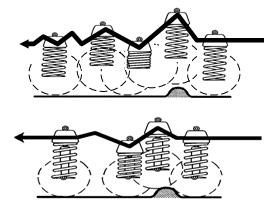
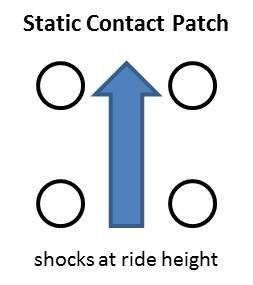
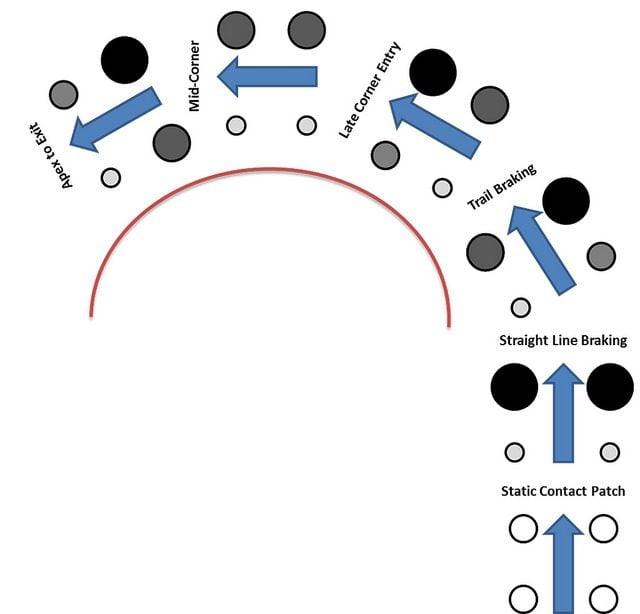
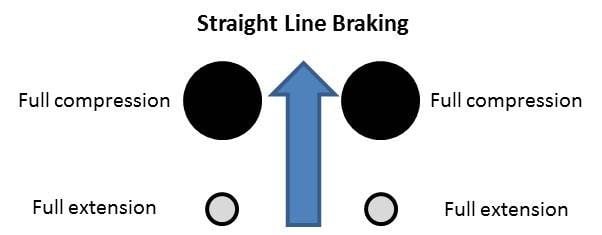
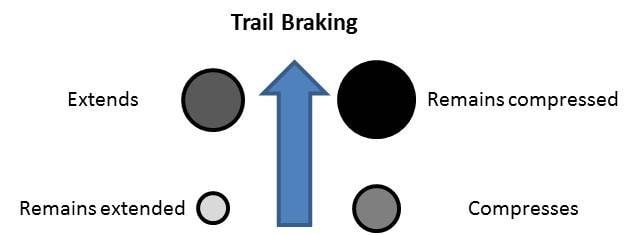
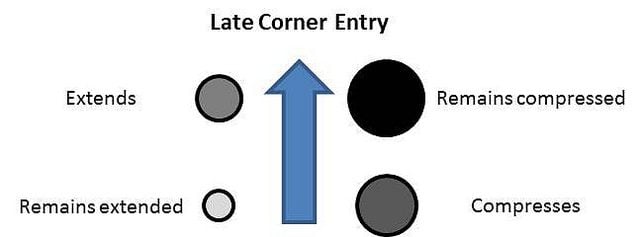
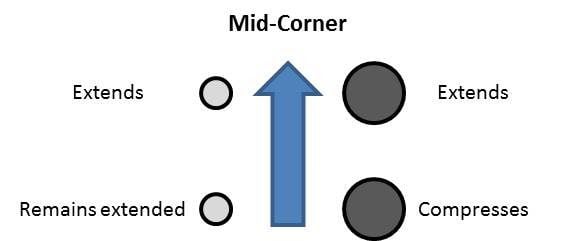
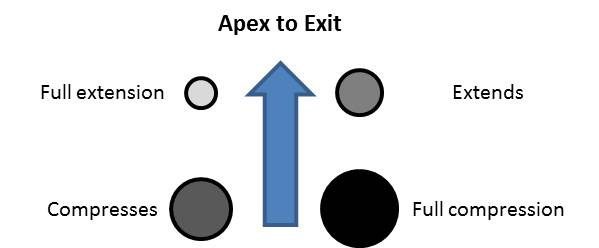






 ), but drift cars on CH is another story...there, I feel like I know my stuff.
), but drift cars on CH is another story...there, I feel like I know my stuff.
